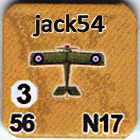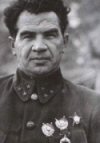Stimpak
Posts: 632
Joined: 8/23/2015
From: BC, Canada
Status: offline

|
A lot of people don't get how huge of a deal thermal imaging is... having used them and fought against them in commercial simulators, as well as reading and listening to testimonies of people who have worked with the actual equipment, the sighting advantage alone decides a battle easily 9 times out of 10.
A proud company of T-80s can roll through the terrain with their heavy armor and big gun, but if they can't see that buried Chieftain platoon maybe even 1500 meters away, then by virtue of not being able to see what's hitting them, they're easy targets for the British.
I myself ran a series of tests to see the balance:
In all 3 tests, both crews are Veteran with equal (85) Morale and readiness.
-1st Scenario, 3 Chieftains and 10 T-80BVs deliberately move onto an elevated field and shoot each other at 3000 meters. Chieftains get the first shot but don't claim any kills until the second volley. All 3 Chieftains go down, while also claiming 3 of the 10 T-80BVs.
-2nd Scenario, 9 Chieftains and 10 T-80BVs are ordered to assault in each other's general direction over the same territory, starting at 3000 meters. Again, first shot goes to the Chieftains. Light rain begins, giving the British another sighting advantage. Notoriously poor Soviet accuracy takes it's toll on the T-80s and they lose 4 tanks before closing into 1500 meters, at which point they suddenly take out 8 of the 9 Chieftains while losing the remainder of their number in the process. That's a pretty good trade for the Russians!
-3rd Scenario, 9 Chieftains ordered to assault a position where 10 T-80BVs deliberately move onto and Hold. This time the Russians get the first shot! The first volley is an ATGM shot that immediately erases one of the 3 British platoons. Return fire destroys a single T-80. The T-80's second shot - guns this time, destroys 2 more Chieftains. All further British return fire is ineffective and the last Chieftain goes down at 1500 meters.
In armored warfare, the dug in and hidden defending force almost always beats the exposed, attacking, and moving (Thus imposing a stabilizer penalty, Russian stabilizers are still noticeably poor even in newer T-72B models) force, even if the attackers are larger in number. Historical examples of this were witnessed multiple times in the middle east and were taught to US commanders (A good video on this is seen here).
How tanks perform on paper just does not have that much influence in actual combat.
Otherwise superior Iranian Chieftain Mk. 5s were beaten by better trained and lucky Iraqis in monkey-model T-62s.
Even back to WW2, experienced T-34 crews could easily knock Tigers out of play.
US Commanders in Desert storm have remarked that they could have swapped equipment with the Iraqis and still have won.
T-34s have confirmed kills on T-72s in Yugoslavia.
Young Chadian soldiers beat out the entire Libyan military with just Toyota trucks.
You could throw an M1A1 at, say, a BMP-2. If that BMP crew has more training, readiness, morale than that Abrams - then they will find a way to knock it out. With their autocannon.
I firmly believe there is no NATO bias, if any at all among the devs at OTS. They have tried their hardest to represent a realistic, albeit heavily abstracted battlefield, and FPRS is still by far my favorite wargame. Never mind the heap of changes planned for Southern Storm, which will be amazing to see when it drops.
|
 Printable Version
Printable Version















 New Messages
New Messages No New Messages
No New Messages Hot Topic w/ New Messages
Hot Topic w/ New Messages Hot Topic w/o New Messages
Hot Topic w/o New Messages Locked w/ New Messages
Locked w/ New Messages Locked w/o New Messages
Locked w/o New Messages Post New Thread
Post New Thread